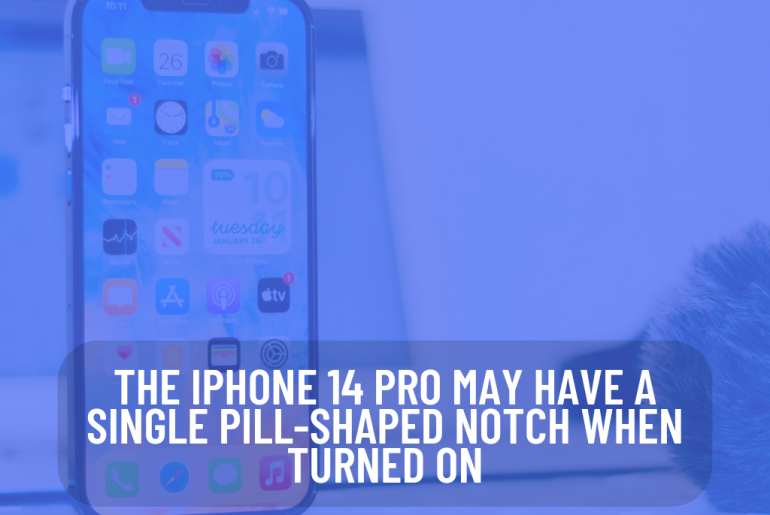All the rumors floating around
The initial iPhone 14 pro that leaked was a single camera cut-out, but with the latest rumor that turned out to be wrong, the iPhone 14 Pro will not have a single-hole punch camera now. The rumors surface barely one week before Apple’s Far Out event, where some new iPhone models are anticipated to be unveiled.
There was more confirmation or more leaks on the design of what the iPhone 14 pro would look like, and at the time, there were two different kinds of designs floating around, there was kind of like this big cut-out at the top, and then the other design was two separate cut-outs. There was like this pill shape on the top and then a hole punch as well.
The whole Apple Community expected these two cut-out designs with the bigger pill shape and then the hole punch, which looks like an eye up until this point.
Another leak floating around last minute said that Apple was going to use the OLED panel, which can turn off individual pixels to give you a perfect black level. They turn off the pixels in that area. It’s going to look like it matches exactly with those cut-outs. And they would create just one big cut-out at the top rather than two separate cut-outs.
Newest Update
Now there is clarification on how Apple is going to use that display space and how it is going to be filled in between the cut-outs with software. Mark German from Bloomberg came out and said this is true that Apple is not going to be displaying two separate cut-outs with the eye hole; they are going to fill in the OLED display or turn off the OLED display and give us one single cut-out at the top one big cut-out across the top.
It is now almost confirmed at this point that the iPhone 14 Pro Design will have two cut-outs, but when you turn on the phone, it will have a bigger cut-out at the top and not get that eye-hole design.
Add the pill shaped notch design over a single cut-out
People are wondering why there is even a need to remove the notch when a larger cut-out takes up almost as much display space. The only space it will save is that it will not be like going all the way up into the phone like the notch. But it is not giving that much more visual space by changing or removing the notch.
Even if you could see the cut-outs between them, if Apple were to separate those cut-outs, that would not add much more display space on the top of the phone. It is still only going to be used to include the status icons. And it is not like if you were browsing a website and you are going to read more text. That is a safe area of the phone. Apple does not let content float up there; even if you are watching a video, it is probably in 16×9. Even if it went into the cut-out, you would not see any extra information between those two cut-outs. It will still feel like this is going to be a pretty close experience to the notch.
Why did Apple implement this design change?
Apple changed the software because it intends to display the status icons for the camera and microphone in this area between the cut-outs. That is going to kind of light up in between where those two cut-outs are. That is like a new visual look for it. And also, they might actually use that top area for some other Design Elements now. There might be a redesign for the camera app for the iPhone 14 pro. Possibly the upper-status area could include all of the different settings rather than at the bottom of the phone.
Will Apple change the design?
These reports align with recently published patents, including those that suggest separating the phone’s IR light emitter from the main notch. The description regarding those patent claims states that the IR light emitter may be positioned in a location with a less-restricted area and utilize the light folding device to direct the IR light in a particular direction. This may result in a smaller notch for holding the imaging and sensing components and a larger display area for the device by reducing the size of the imaging and sensing components.

